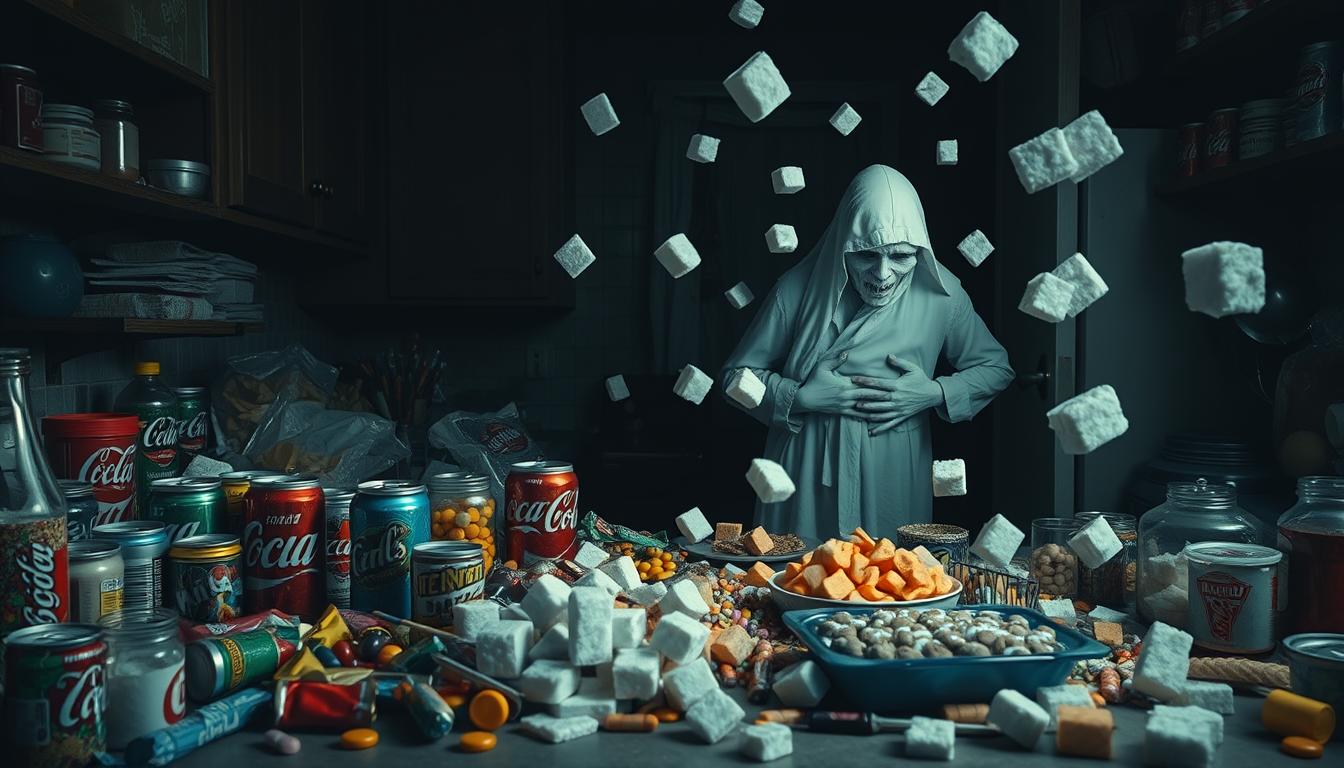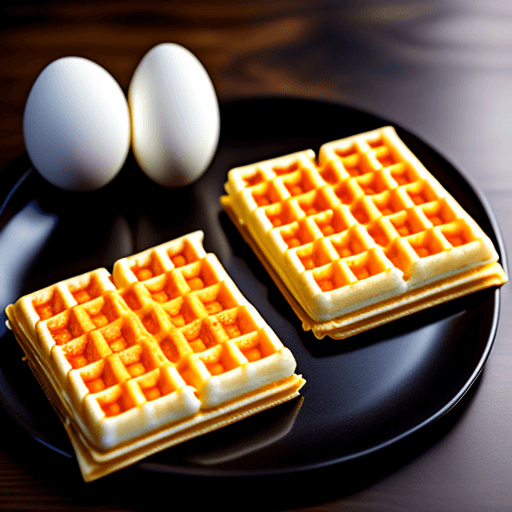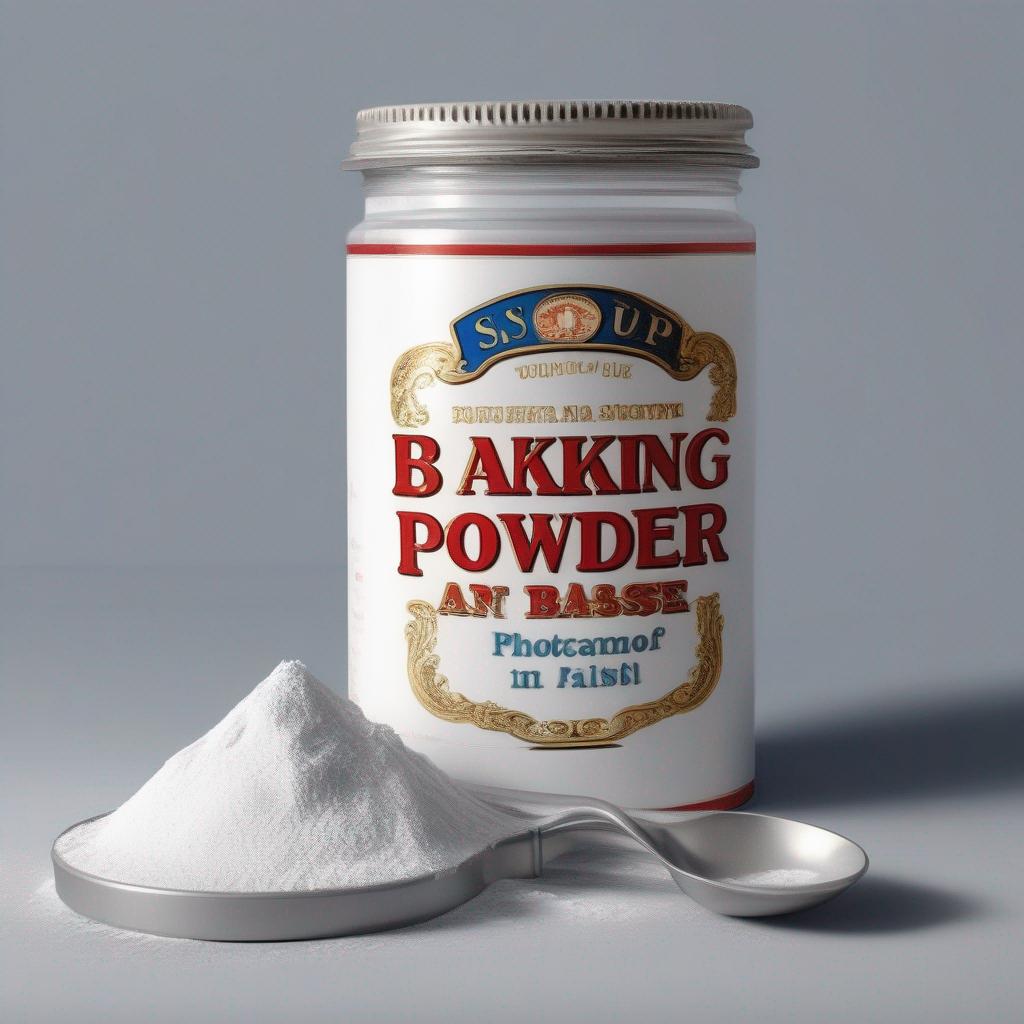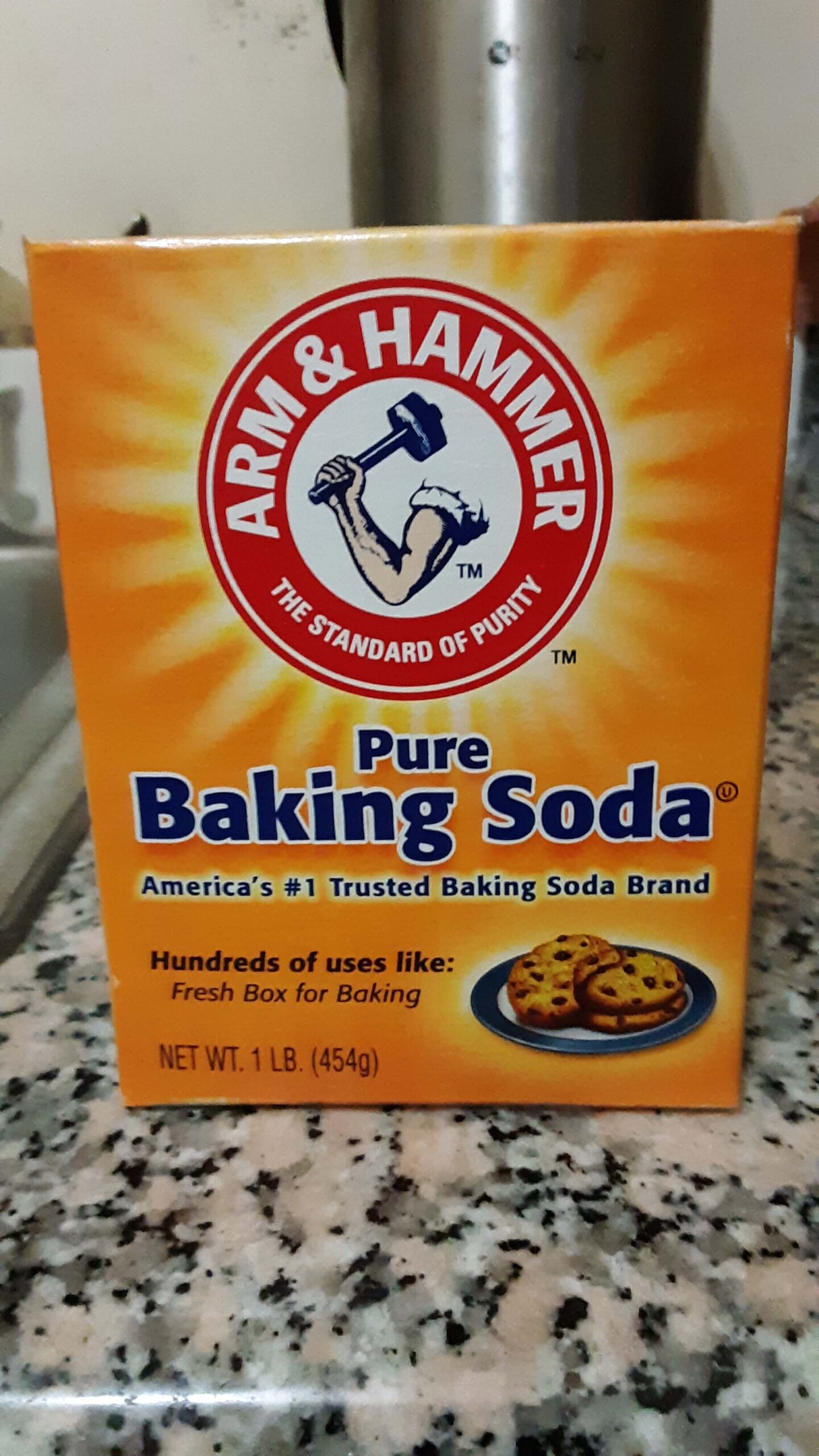Imagine biting into a fluffy Belgian waffle, its golden exterior perfectly crisp and its interior light and airy. Now, imagine achieving that same level of fluffiness in your own homemade waffles. How is it possible? The secret lies in a small but mighty ingredient: cream of tartar.
Cream of tartar may seem like an ordinary pantry staple, but when used correctly, it can transform your waffle game to the next level. Egg whites can expand up to eight times in volume when whipped and properly stabilized. As an egg white stabilizer, cream of tartar works wonders in creating that sought-after lightness and volume in your batter.
I will look at the science behind cream of tartar’s role in baking and how it specifically enhances the texture of Belgian waffles. With tips on incorporating this magical ingredient into your batter and troubleshooting common issues with waffle texture, you’ll be well on your way to mastering the art of fluffy Belgian waffles.
Key Takeaways
- Cream of tartar is a key ingredient for achieving fluffy Belgian waffles.
- Cream of tartar stabilizes egg whites and enhances their pH levels.
- Cream of tartar increases meringue stability by strengthening protein bonds.
- Cream of tartar can be substituted with lemon juice or white vinegar for stabilizing egg whites.
Table of Contents
- 1 Understanding the Role of Cream of Tartar in Baking
- 2 The Science Behind Fluffy Belgian Waffles
- 3 How Cream of Tartar Stabilizes Egg Whites
- 4 Tips for Incorporating Cream of Tartar into Waffle Batter
- 5 Achieving the Perfect Consistency with Cream of Tartar
- 6 Experimenting with Different Ratios of Cream of Tartar
- 7 Enhancing Flavor with Cream of Tartar
- 8 Alternatives to Cream of Tartar for Fluffy Waffles
- 9 Troubleshooting Common Issues with Waffle Texture
- 10 Creative Ways to Use Cream of Tartar in Other Recipes
- 11 Mastering the Art of Fluffy Belgian Waffles
- 12 Frequently Asked Questions
- 13 Conclusion
Understanding the Role of Cream of Tartar in Baking
If you want your Belgian waffles to be irresistibly fluffy, it’s time to understand the magical powers of cream of tartar. Cream of tartar is a versatile ingredient with various culinary uses, but it plays a particularly important role in baking techniques.
When it comes to achieving that perfect fluffiness in baked goods, understanding the chemical reactions involved is crucial. Cream of tartar is often used in conjunction with baking powder to enhance its effectiveness. Baking powder already contains an acid component (usually cream of tartar) and a base component (usually baking soda). When these two components are mixed with moisture and heat, they undergo a chemical reaction known as leavening. This reaction produces carbon dioxide gas bubbles, which cause the batter or dough to rise and become light and airy.
One key way cream of tartar contributes to this process is by increasing meringue stability. Meringue refers to whipped egg whites that are commonly used in desserts like pavlova and soufflés. Cream of tartar helps stabilize the structure of the meringue by creating an acidic environment that strengthens the protein bonds in the egg whites.
Cream of tartar is a valuable tool for achieving fluffier Belgian waffles due to its role in facilitating chemical reactions during baking. By enhancing the effectiveness of baking powder and improving meringue stability, cream of tartar helps create light and airy textures in baked goods.
The Science Behind Fluffy Belgian Waffles
To achieve that perfect airy texture in your waffles, understanding the science behind their fluffiness is important. Imagine biting into a waffle so light and fluffy that it practically melts in your mouth, leaving you craving for more. The fluffiness of Belgian waffles can be attributed to several factors, including the role of leavening agents in the batter, the impact of mixing techniques, the type of flour used, cooking temperature, and the addition of ingredients like buttermilk or yogurt.
Leavening agents such as baking powder or baking soda play a crucial role in creating air pockets within the batter. These agents release carbon dioxide gas when they come into contact with moisture and heat during cooking. This gas gets trapped in the batter, causing it to expand and result in a lighter texture.
Mixing techniques also affect waffle texture. Overmixing can lead to gluten development, resulting in a denser and chewier final product. On the other hand, gently folding ingredients together can help maintain airiness.
The type of flour used can also impact waffle fluffiness. All-purpose flour provides structure but may yield slightly denser waffles compared to cake flour or pastry flour which have lower protein content.
Cooking temperature plays a vital role as well. A higher temperature promotes rapid expansion while ensuring that the outside crisps up nicely without drying out the interior.
Also incorporating additional ingredients like buttermilk or yogurt adds acidity to react with leavening agents and create extra lift and tenderness in your waffles.
How Cream of Tartar Stabilizes Egg Whites
One key ingredient that can help you achieve perfectly airy and melt-in-your-mouth textures in your batter is cream of tartar, which plays a crucial role in stabilizing egg whites.
Cream of tartar, also known as potassium bitartrate, is a white powder with acidic properties. When added to egg whites, it helps stabilize them by increasing their pH levels. This stabilization process allows the egg whites to hold more air bubbles, resulting in a fluffier texture when cooked.
The chemical properties of cream of tartar make it an excellent choice for stabilizing egg whites. It not only strengthens the structure of the proteins in the eggs but also prevents overbeating, which can lead to deflation and loss of volume.
If you don’t have cream of tartar on hand, there are substitute options available. Lemon juice or white vinegar can be used as alternatives since they also have acidic properties that can stabilize egg whites.
While cream of tartar primarily impacts texture rather than taste directly, its use can enhance the overall flavor profile of your waffles. The stabilized egg whites contribute to a lighter and more delicate mouthfeel.
It’s important to note that adding cream of tartar may affect other ingredients in your waffle batter. For example, it may slightly increase the acidity level, so adjusting other leavening agents like baking powder might be necessary for optimal results.
Incorporating cream of tartar into your batter will undoubtedly elevate your Belgian waffle experience by providing you with fluffy and delicious results every time.
Tips for Incorporating Cream of Tartar into Waffle Batter
Let me share some tips on how you can effortlessly incorporate the secret ingredient for achieving perfectly airy and melt-in-your-mouth textures in your batter.
-
Incorporating flavors: Cream of tartar enhances the flavor of your waffles, but you can also experiment by adding other ingredients like vanilla extract or cinnamon for a unique twist. Just remember to adjust the amount accordingly.
-
Dietary restrictions: If you have dietary restrictions, fear not! Cream of tartar is gluten-free and can be used in gluten-free waffle recipes. It’s also suitable for those following a vegetarian or vegan diet.
-
Storage tips: To ensure the longevity of your cream of tartar, store it in an airtight container away from heat and moisture. This will help preserve its potency and effectiveness.
-
Using different flours: Feel free to substitute all-purpose flour with alternative flours like whole wheat or almond flour. However, keep in mind that different flours absorb liquids differently, so you may need to adjust the amount of liquid in your recipe accordingly.
- Adjusting sweetness: Cream of tartar doesn’t contribute sweetness to your waffles, so feel free to adjust the amount of sugar or sweetener according to your preference.
By incorporating these tips into your waffle-making process, you’ll be able to enjoy fluffy Belgian waffles with amazing flavors while accommodating various dietary needs. Don’t forget to experiment and have fun creating delicious variations!
Achieving the Perfect Consistency with Cream of Tartar
Achieving the perfect consistency with cream of tartar is like adding a secret ingredient to your waffle batter that transforms it into a cloud-like dream, making every bite feel like you’re floating on a pillow of deliciousness. Cream of tartar not only stabilizes egg whites but also adds unique benefits to various other recipes.
For those who don’t have cream of tartar on hand, there are substitutes available such as lemon juice or white vinegar, although they may slightly alter the taste.
In meringue recipes, cream of tartar is essential for creating sturdy and voluminous peaks that hold their shape when baked.
Incorporating cream of tartar into pancake batter results in fluffier pancakes with a lighter texture.
Similarly, using cream of tartar in soufflés helps them rise sufficiently while maintaining their delicate structure.
The benefits of using cream of tartar extend beyond its ability to stabilize and enhance the consistency of different dishes. It can help prevent sugar syrups from crystallizing by inhibiting the formation of crystals. Cream of tartar also acts as an acidifier in baking, activating baking soda and ensuring proper leavening. Also it can be used as a cleaning agent for removing stains or rust from household items.
Incorporating cream of tartar into your waffle batter not only improves the texture but also adds unique benefits to your culinary creations. Whether you use it as a stabilizer in meringues or achieve fluffier pancakes and soufflés, this versatile ingredient is sure to elevate your cooking skills and impress your taste buds with its remarkable effects.
Experimenting with Different Ratios of Cream of Tartar
After many tries, I finally discovered that using 1/8th of a teaspoon of cream of tartar for each 1 large egg white gives me the perfect consistency with cream of tartar in my Belgian waffle batter. Recently, I decided to take my experimentation further by trying out different ratios of this egg white stabilizer. The goal was to see how these variations would affect the texture and consistency of the final waffles.
In my quest for fluffier waffles, I started by using a smaller amount of cream of tartar than before. This resulted in waffles that were still light and airy but lacked the desired level of fluffiness. On the other hand, when I increased the amount of cream of tartar, I noticed a significant improvement in the texture. These waffles became incredibly fluffy, almost like little pillows.
To provide you with more insight into my findings and experiences, here are three sub-lists highlighting key observations:
-
Increased Cream of Tartar:
- Waffles turned out exceptionally fluffy
- Texture was lighter and airier than ever before
-
Decreased Cream of Tartar:
- Waffles remained light but lacked desired fluffiness
- Texture was not as pronounced as with higher ratios
- Optimal Ratio:
- Found a sweet spot where waffles were both fluffy and light
- Texture had an ideal balance between airiness and density
Through these experiments with different ratios of cream of tartar, I gained valuable knowledge about its impact on waffle texture and consistency. This understanding will undoubtedly guide me towards achieving consistently perfect Belgian waffles in the future.
Enhancing Flavor with Cream of Tartar
Incorporating cream of tartar into your waffle batter adds a delightful burst of flavor that’ll leave your taste buds dancing with joy. Not only does cream of tartar enhance the flavor, but it also serves as a versatile ingredient with various uses and benefits.
Besides being commonly used in baking, cream of tartar can be utilized in other recipes such as meringues, soufflés, and even homemade playdough.
One of the key benefits of using cream of tartar is its ability to stabilize egg whites. This results in fluffier waffles with a light and airy texture. By adding just a small amount of cream of tartar to your batter, you can achieve those picture-perfect Belgian waffles that’re both crisp on the outside and soft on the inside.
If you find yourself without cream of tartar on hand or prefer alternatives, there’re substitutes available such as lemon juice or white vinegar. However, keep in mind that these substitutes may slightly alter the taste and texture of your waffles.
To truly elevate the flavors in your waffles, consider looking at different recipes that incorporate cream of tartar. From cinnamon-infused waffles to zesty citrus variations, there’re many options to experiment with.
Alternatives to Cream of Tartar for Fluffy Waffles
Now Now I will discuss some alternatives to using cream of tartar for making fluffy waffles. While cream of tartar is a common ingredient used for stabilizing egg whites and achieving that light and airy texture in waffle recipes, there are other options available that can produce similar results.
One alternative is using lemon juice or vinegar as a replacement for cream of tartar. Both lemon juice and vinegar contain acid, which helps to stabilize the egg whites and create fluffier waffles. Simply add a teaspoon of lemon juice or vinegar for every two egg whites in your recipe.
Another option is using baking powder instead of cream of tartar. Baking powder already contains an acid component along with the leavening agent, which can help in achieving fluffy waffles without the need for additional stabilizers.
Also you can experiment with different techniques when whisking your egg whites. Whisking them until they form stiff peaks will incorporate more air into the batter, resulting in lighter and fluffier waffles.
By looking at these ingredient alternatives and implementing proper egg white techniques, you can still enjoy deliciously fluffy waffles without relying solely on cream of tartar. So go ahead and try out these options to expand your breakfast menu with more delightful and airy choices!
Troubleshooting Common Issues with Waffle Texture
To troubleshoot common issues with waffle texture, We will now examine everything about waffle-making and unravel the mysteries that lie beneath the crispy exterior.
One common problem is a dense or soggy texture, which can be improved by making adjustments to the waffle batter. If your waffles are turning out too dense, try reducing the amount of liquid in the batter or increasing the leavening agent like baking powder. On the other hand, if your waffles are coming out too dry, you may need to add more liquid or fat to achieve a moister texture.
Another issue that many people face is waffles sticking to the iron. To prevent this, make sure to properly grease your waffle iron before pouring in the batter. You can use cooking spray or melted butter for this purpose. Also allowing your waffles to cook until they are fully cooked and golden brown will also help them release easily from the iron.
Also enhancing your waffle toppings can greatly elevate their overall texture and flavor. Consider adding fresh fruits like berries or sliced bananas on top of your finished waffles for added moisture and sweetness. Alternatively, you can also try spreading a thin layer of creamy peanut butter or Nutella on each warm waffle before serving.
By troubleshooting these common issues with waffle texture and implementing these tips, you’ll be able to create perfectly fluffy and delicious Belgian-style waffles every time!
Creative Ways to Use Cream of Tartar in Other Recipes
Get ready to level up your cooking skills by discovering the many creative ways you can use cream of tartar in other recipes! Cream of tartar isn’t just for stabilizing egg whites in waffle batter; it’s got numerous unexpected uses that can elevate your culinary creations.
One way to incorporate cream of tartar into your cooking repertoire is by using it as a substitute for baking powder. If you’re running out of baking powder, simply combine cream of tartar with baking soda to create a homemade version. This can come in handy when making cookies or cakes.
Cream of tartar can also be added to soups and stews as a natural thickener. Its acidic properties help bind ingredients together and create a velvety texture. Just a small amount goes a long way in enhancing the flavors and consistency of your favorite hearty dishes.
If you’ve got a sweet tooth, try using cream of tartar in candy making. It helps prevent sugar crystallization, resulting in smoother and more luscious candies. Whether you’re making caramel or fudge, adding a pinch of cream of tartar can make all the difference.
Don’t limit yourself to using cream of tartar only for fluffy waffles. look at its versatility as a substitute, thickener, and enhancer in various recipes such as cookies, soups, and candies. Let your creativity soar and discover new ways to incorporate this unique ingredient into your culinary adventures.
Mastering the Art of Fluffy Belgian Waffles
Picture yourself as a waffle wizard, effortlessly creating pillowy masterpieces that transport your taste buds to breakfast heaven. To achieve such culinary greatness, it is crucial to master the art of making fluffy Belgian waffles. Let’s examine the secrets of achieving that perfect texture and look at some tips and tricks to elevate your waffle game.
Firstly, let’s talk about waffle batter consistency. It should be thick but pourable, similar to pancake batter. This ensures that the batter spreads evenly on the waffle iron for uniform cooking.
Now, let me introduce you to my trusted assistant – cream of tartar. Not only does it stabilize egg whites for a fluffier texture, but it also adds a tangy flavor profile. However, if you don’t have any cream of tartar on hand, fear not! You can substitute it with lemon juice or white vinegar in equal amounts.
As we progress on our journey towards fluffy perfection, choosing the right waffle iron is essential. Look for one with adjustable temperature settings and non-stick plates to ensure even browning and easy release.
To add an extra touch of indulgence, consider topping your fluffy Belgian waffles with whipped cream, fresh berries, or maple syrup. These toppings not only enhance the flavor but also provide contrasting textures for a delightful eating experience.
With these insights and techniques at your disposal, you are now equipped to create fluffy Belgian waffles that will surely impress your family and friends. Happy cooking!
Frequently Asked Questions
Can cream of tartar be substituted with any other ingredient in waffle batter?
Yes, cream of tartar can be substituted with other ingredients in waffle batter. However, it may affect the texture of the waffles. Cream of tartar is commonly used to stabilize egg whites and create a fluffy texture in Belgian waffles. Without it, the waffles may not rise as much or have the same lightness.
While cream of tartar can also be used in pancake batter and as a meringue stabilizer, it isn’t typically used in other breakfast recipes.
How does cream of tartar enhance the flavor of waffles?
Cream of tartar enhances the flavor of waffles by acting as a natural flavor enhancer. It brings out the richness and depth of other ingredients, creating a harmonious blend of flavors. This versatile ingredient is not only known for its culinary uses but also for its health benefits. It aids digestion, promotes healthy skin, and helps in reducing blood pressure.
Also cream of tartar has been historically used in cooking techniques such as stabilizing egg whites and preventing sugar crystallization. Its alternative uses include cleaning and stain removal due to its acidic properties. When combined with flavors like vanilla or cinnamon, cream of tartar adds a delightful twist to your waffle recipe.
Can cream of tartar be used in other baking recipes besides waffles?
Cream of tartar, a versatile ingredient, can be used in various baking recipes to enhance texture and stability. It can be used in cookies as a leavening agent, resulting in soft and chewy treats. In cakes, it helps create a tender crumb and prevents excessive spreading. In meringue, cream of tartar stabilizes the egg whites, allowing for greater volume and stiffness. It can also be used in pancakes to improve their fluffiness and in bread for better structure and rise.
What are some common issues with waffle texture that can be solved with cream of tartar?
When it comes to waffle texture, cream of tartar can work wonders. The effects of cream of tartar on pancake texture are impressive, as it helps create a light and fluffy consistency. But its benefits don’t stop there. Cream of tartar can also be used in cake batter to improve the overall texture and rise.
Also this versatile ingredient acts as a natural food preservative and can even be used in homemade cleaning solutions. looking at the science behind cream of tartar in cookie recipes reveals its unique properties for enhancing flavor and texture.
Are there any creative ways to use cream of tartar besides using it in baking recipes?
Cream of tartar, besides being an egg white stabilizer for fluffier Belgian waffles, has unique household uses. It can be used in DIY cleaning solutions to remove stains and grease.
Also it has alternative uses in savory dishes as a natural preservative and flavor enhancer.
In terms of unexpected health benefits, cream of tartar is believed to help with arthritis pain relief and detoxification.
Also it can be used in fun science experiments involving volcanoes or crystal formation.
Conclusion
Also cream of tartar is a valuable ingredient for achieving fluffy Belgian waffles. It helps create a light and airy texture that will delight your taste buds by stabilizing egg whites.
Interestingly, did you know that adding just 1/8 teaspoon of cream of tartar to egg whites increases their volume by up to three times? This remarkable statistic showcases the power of this baking secret and should inspire you to experiment with cream of tartar in your culinary creations.
So go ahead, whip up some delicious waffles and elevate your breakfast experience!




